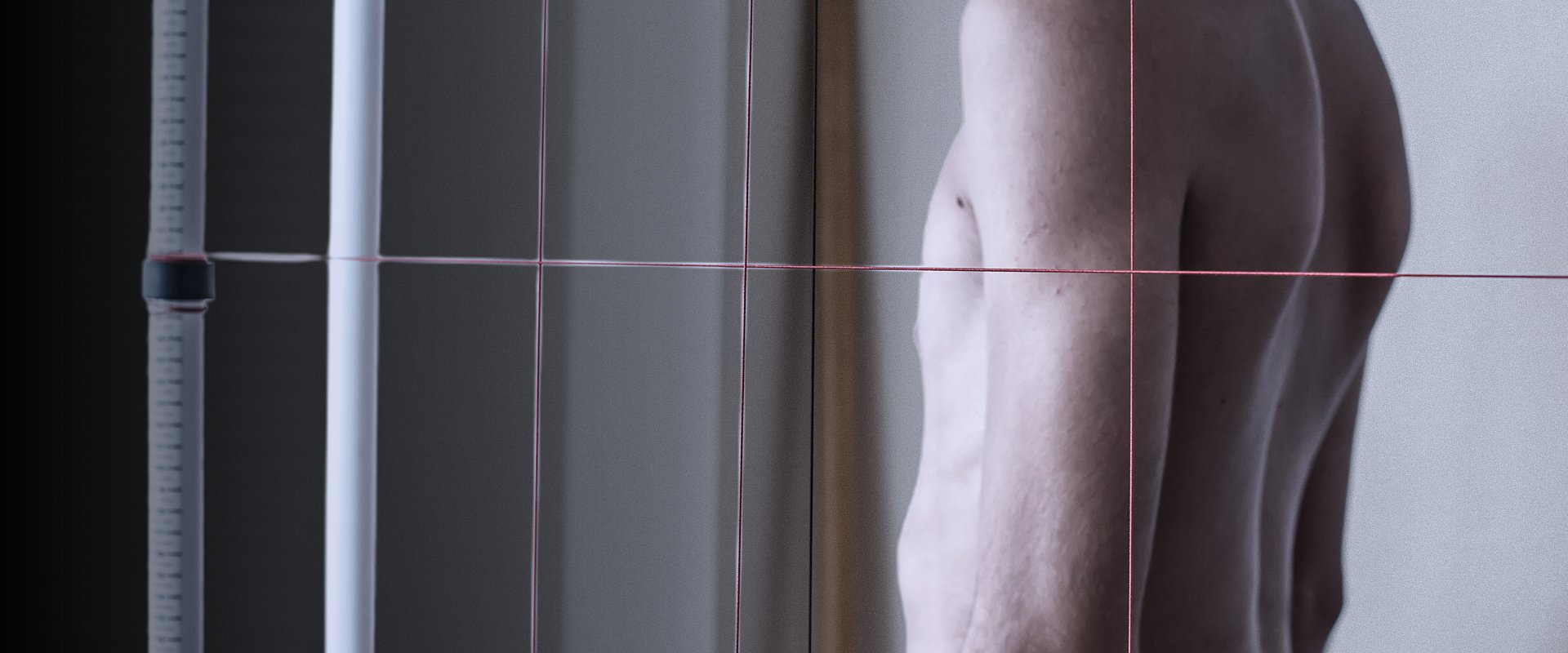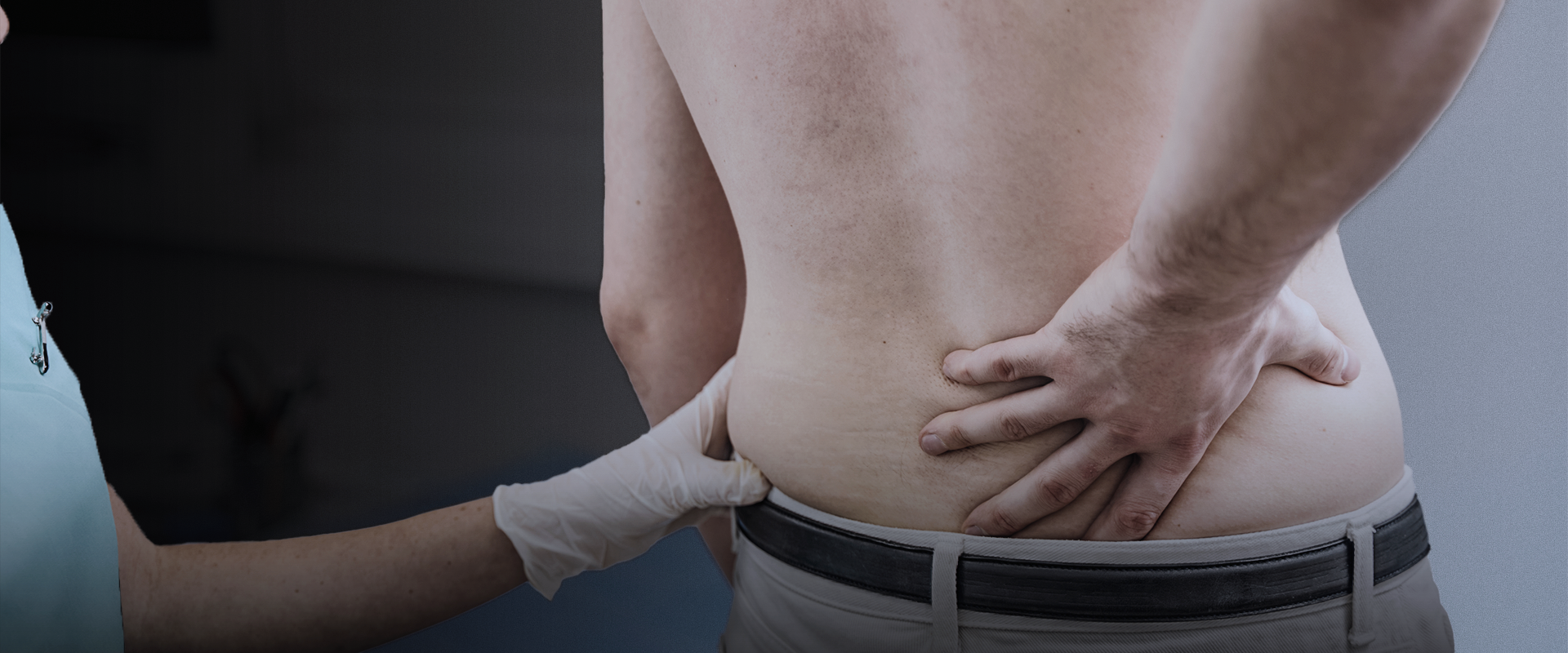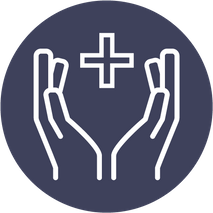
Physical therapy for Lordosis
AT EVOLVE
Physical therapy for Lordosis
HOW CAN PHYSICAL THERAPY ADDRESS ABNORMAL LORDOSIS OF THE SPINE?
Lordosis is an anatomical term that describes the natural arch found in the cervical and lumbar spine, ie. the back and neck. A healthy spine has some degree of lordosis, however, an increase or decrease in this normal curvature can cause symptoms such as back pain and difficulty walking. Physical therapists are movement specialists who treat musculoskeletal conditions like abnormal lordosis. By looking for underlying causes and treating symptoms your physical therapist is an excellent resource for treating abnormal lordosis.
WHAT DOES PHYSICAL THERAPY FOR A LORDOSIS CHANGES LOOK LIKE?
Physical therapy for changes in lordosis is aimed at improving symptoms of pain or stiffness, helping restore normal curvature of the spine as much as possible and improving posture and mobility. My team of therapists and I will start by getting to know your concerns and goals and performing a thorough physical exam to determine what areas we should target with our physical therapy interventions. Your therapist will employ manual therapy interventions to target joint and tissue mobility while also prescribing movements and exercises for strength, motor control and mobility to be performed in the home and the clinic. Modalities such as electrical stimulation, ultrasound and laser therapy may also be utilized.
HOW LONG WILL I NEED PHYSICAL THERAPY?
The duration of your physical therapy plan of care is based on several factors including the degree of lumbar lordosis and to what degree these changes are affecting your daily life. While full resolution of symptoms can take some time, you may begin to see some results right away. You should experience improvements in many symptoms such as pain and stiffness within a couple of weeks but returns in strength, flexibility and posture may take longer. Achieving long-lasting results may take some time, but dedication to your program will not only help you achieve these results but will help to decrease the likelihood of symptoms recurring in the future.
CHANGES IN LORDOSIS…
The piriformis muscle is a small, pyramidal-shaped muscle deep in the buttock near the center. It arises from the front side of the sacral bone at the base of the spine and extends across the buttock to attach at the top of the femur near the hip. It lies beneath the biggest gluteal muscle called the gluteus maximus. This muscle is a rotator of the hip. It rotates the hip internally or externally depending on the position of the hip. It also helps with stability at the hip.
The sciatic nerve is a bundle of nerve fibers that originate from the base of the spine and innervates many of the leg and foot muscles. Generally this nerve runs just beneath the piriformis muscle exiting the pelvis below the belly of the muscle but anatomical variations exist wherein the nerve travels over or through the muscle belly of the piriformis and sometimes even splits around it. When piriformis syndrome is thought to be caused by these anatomical anomalies of nerve orientation it is called primary piriformis syndrome but it is unclear how often these variations in nerve position actually cause symptoms.
The most common type of piriformis syndrome occurs due to compression of the sciatic nerve by the piriformis muscle. This can occur due to several causes of which the most common include:
- Spasm or inflammation of the soft tissue around the buttocks due to trauma
- Muscle spasms of the piriformis following back surgery
- Piriformis muscle spasms due to lumbar or sacral joint pathology
- Piriformis muscle spasms due to overuse
- Shortening of the piriformis muscle due to biomechanical factors which compresses or irritates the sciatic nerve
- Pain felt deep in the buttocks
- Numbness in the buttock or down the leg
- Persistent low back pain that may be radiating
- Paresthesias/tingling or abnormal sensations in the buttock or leg
- Pain with prolonged sitting
- Tenderness to palpation over the area
- Increased pain after activities like stair climbing, bending, squatting or walking
End Injury Progression
Physical therapy for Lordosis has proven to prevent injury, slow and even stop pain issues, improve performance, and reverse injury progression in many cases.
Relieve Pain
The movements used in this technique can target your entire body helping you to manage discomfort and pain during the course of your physical therapy treatments.
Improve Range of Motion
Posture awareness is an important area to focus on due to the fact that certain positions may cause you further discomfort and pain.
Restore Mobility
You can regain mobility and flexibility by taking part in the stretches and exercises as prescribed by your physical therapist.
How Long Will Physical Therapy for lordosis Last?
If you decide to work with a physical therapist to help with your Lordosis issues, your entire treatment plan could consist of around 8-20+ different physical therapy sessions that will each last 60-90 minutes. Once you complete your customized physical therapy treatment plan, you will be able to continue to do the prescribed stretches and exercises utilized during your Lordosis PT sessions yet in the comfort of your own home.
HOW IS ABNORMAL LORDOSIS DIAGNOSED
Your physical therapist will ask you about the symptoms you are experiencing, what changes you have noticed in your posture and spine and how long you have been experiencing your symptoms. They will also perform a physical exam which usually includes observation of spinal alignment from the front, back and side as well as palpation or hands-on assessment of the spine and pelvis. Typically you will be asked to perform spinal motions such as bending, twisting or extending so your PT can observe how your spine moves and they may even take some measurements. Often this examination is enough to diagnose changes in lumbar lordosis but when needed, imaging such as an x-ray may be recommended.
PHYSICAL THERAPY INTERVENTIONS FOR LUMBAR LORDOSIS
Your physical therapist will design an individualized treatment plan to address changes in lumbar lordosis. Your symptoms, goals and underlying cause of the change in lordosis will indicate which treatments are best. Below are some common treatments to address this condition:
Modalities and manual therapy techniques to reduce pain and inflammation, increase blood flow, improve tissue health and spinal mobility. This may include soft tissue mobilization, joint mobilization, IASTM, myofascial release techniques, electrical stimulation, ultrasound, ice/heat and laser therapy.
Muscle control, strength and endurance training to improve muscle performance to support your spine in better alignment.
Mobility and stretching exercises to restore normal range of motion and flexibility in the spine, and surrounding musculature to help increase or reduce lumbar lordosis.
Motor control and coordination training to ensure proper muscle activation and control around the spine as you progress back to normal activities.
Balance training: Balance training may be indicated to help accommodate for changes in center of gravity that can occur when spinal curvature changes.
Gait training to restore normal walking if changes in lordosis have affected your walking.
Have you noticed your posture changing? Are you experiencing back pain or difficulty walking, you might be experiencing changes in spinal curvature. Working with a skilled physical therapist can help improve your symptoms and address changes in your spine. To schedule your initial evaluation with a physical therapist on our team, call Evolve Physical Therapy today.
Mill Basin (located in Harbor Fitness)
6161 Strickland Ave
Brooklyn, NY 11234
Monday: 7am-8pm
Tuesday: 7am-8pm
Wednesday: 8am-5pm
Thursday: 7am-8pm
Friday: 8am-1pm
Park Slope (located in Harbor Fitness)
550 5th Ave.
Brooklyn, NY 11215
Monday: 9am-8pm
Tuesday: 8am-6pm
Wednesday: 9am-8pm
Thursday: 8am-6pm
Friday: 8am-3pm
Gravesend
372 Avenue U
Brooklyn, NY 11223
Monday-Thursday: 8am-8pm
Friday: 8am-3pm
Kings Highway
945 Kings Highway
Brooklyn, NY 11223
Monday-Wed.: 12pm-8pm
Ready to take the next step to a healthier you?
Contact Us Today!
PHYSICAL THERAPY FOR LORDOSIS
Need Physical therapy for Lordosis?
Let our caring and compassionate physical therapists help you with relieving pain while getting you back on your feet comfortably.
Call now to schedule your first PT consultation free of charge.
Call: 1-718-747-9321







